16. ‘The World had need of them’
© 2022 William St Clair, CC BY-NC-ND 4.0 https://doi.org/10.11647/OBP.0136.16
There was, however, one puzzle that none of the returning residents or newly-arrived visitors could explain. Having heard, or read about, the reports that the Ottoman army planned to destroy the ancient monuments, and having in some cases been personally assured by high-ranking Ottoman officials that this was the intention, they were amazed to find that, without exception, the ancient monuments of the town were not only still standing but were undamaged. As was reported by a visitor in 1832 who was struck by the contrast with the ruins of the modern town, the churches and the mosques: ‘The perfectness of the other monuments, however, is a great compensation, and their very fewness makes it the more wonderful that so many others should have gone down into the dust without a trace, and these selected ones still standing very nearly the same as when they were gazed at by old Athenian eyes’.1 The contrast was inescapable.2 Amongst the stinking, rat-infested remains of the town in which the people sheltered with their animals, the ancient buildings looked, as another visitor wrote, like ‘pearls in a dunghill’.3
The Theseion in particular stood out, ‘in almost uninjured beauty’.4 What had been, for more than a thousand years, one of the largest churches in Athens was, during the seven years after the surrender of 1827, used as a stable for the horses of the Ottoman cavalry. The Christian paintings inside were obliterated or defaced, as had happened in many other churches, and the tombs were broken and covered in dung.5 But, as far as the fabric of the building was concerned, ‘not a column and scarcely a stone has been displaced’.6 The exterior, including the ancient sculptured frieze, remained unharmed: no damage had occurred since Elgin’s agents had removed pieces of the ancient roof between 1801 and 1803.7
And besides the evidence of the many reports in words, we have pictures, including a number by the professional Swiss landscape artist Johann Jakob Wolfensberger, who had arrived in Athens in July 1832, and who stayed in Greece for a number of months after the surrender of the Acropolis in April 1833.8 Figure 16.1 shows an engraved version of Wolfensberger’s picture of the Theseion standing intact despite the destruction of the surrounding buildings.
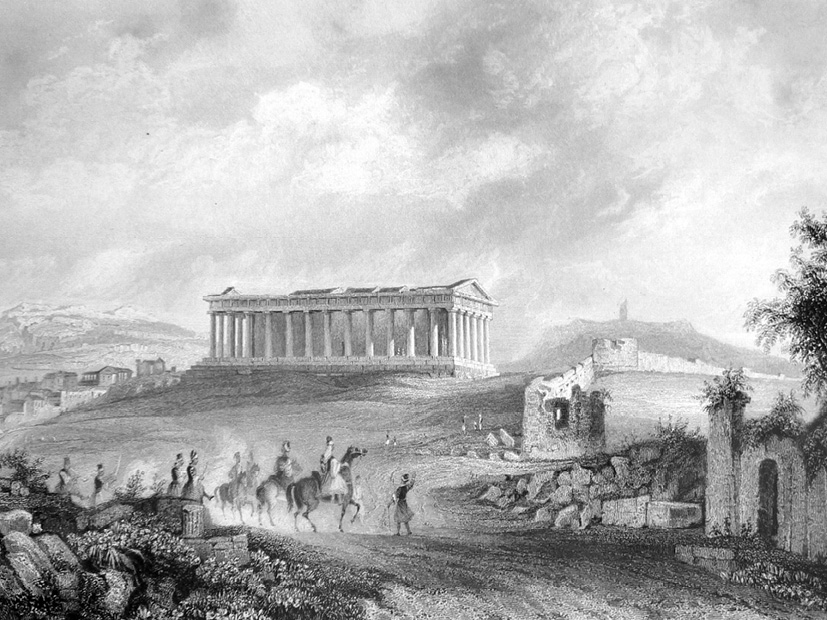
Figure 16.1. The Temple of Theseus. ‘Drawn by Wolfensberger, engraved by A. Le Petit. Fisher, Son, & Co. London & Paris.’ Engraving on steel.9
Although Wolfensberger’s images are described in the books in which they appeared as ‘from nature’, these words do not claim that they are accurate presentations of the scene, only that the artist had actually visited the places pictured.10 Because they were created by the recently perfected technology of engraving in steel, they were not only able to be simultaneously published in several countries, but they could be reproduced in unlimited numbers both in books and individually at falling marginal cost, and therefore price, almost indefinitely—in practice, for decades after the ruins of the modern town had been cleared and the actual post-Revolution cityscape transformed.
Another view of the Theseion standing isolated and untouched, made on the spot by James Hore in 1835 and not reproduced until now, is given as Figure 16.2. The stable had already been turned into a repository for antiquities found in the town, a proto-museum in the open air, and a facility that provided secure storage against tourists with their money and their hammers.
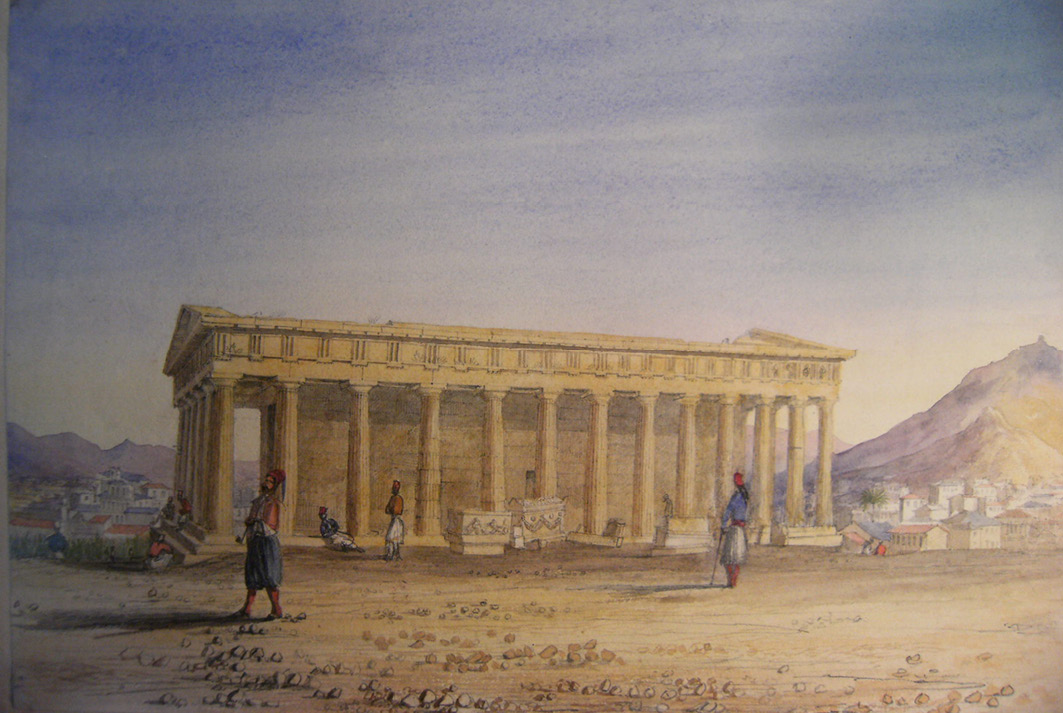
Figure 16.2. The ‘temple of Theseus’. Watercolour by James Hore, 1835.11
With the Monument of Lysicrates too, to the surprise of visitors, although the complex of buildings and gardens into which it had been built had been destroyed, the Monument itself stood untouched and now isolated among the debris.12 It had been a working building, bought in the seventeenth century for the French Capuchins who had been permitted by the Ottoman authorities to establish a small community in Athens, since which time it had been a place where visiting Franks could stay as at a hotel, meet their friends, and engage local people to provide them with services.13
The astonishing difference since pre-Revolution times can be seen by comparing the image of Figure 16.3, made shortly before the Revolution, with the engraved picture by Wolfensberger shown as 16.4. Inside the former we may catch a glimpse of Padre Paulo, the long-time resident, the reports of whose conversations have been used in recovering an understanding of conditions in Athens before the Revolution.
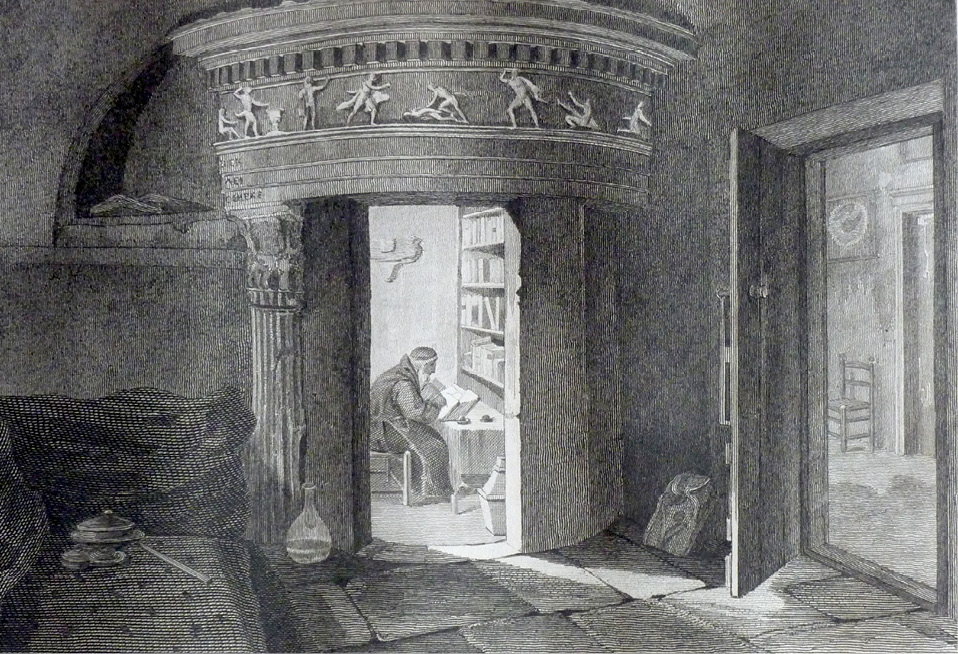
Figure 16.3. ‘Monument of Lysichrates’. Copper engraving of a view taken in 1805 or earlier.14
Wolfensberger’s post-war image, reproduced as Figure 16.4, shows how the town, including almost all of the buildings previously still in use, had been destroyed, in many cases deliberately so, by setting them on fire, leaving the Monument standing in isolation.15
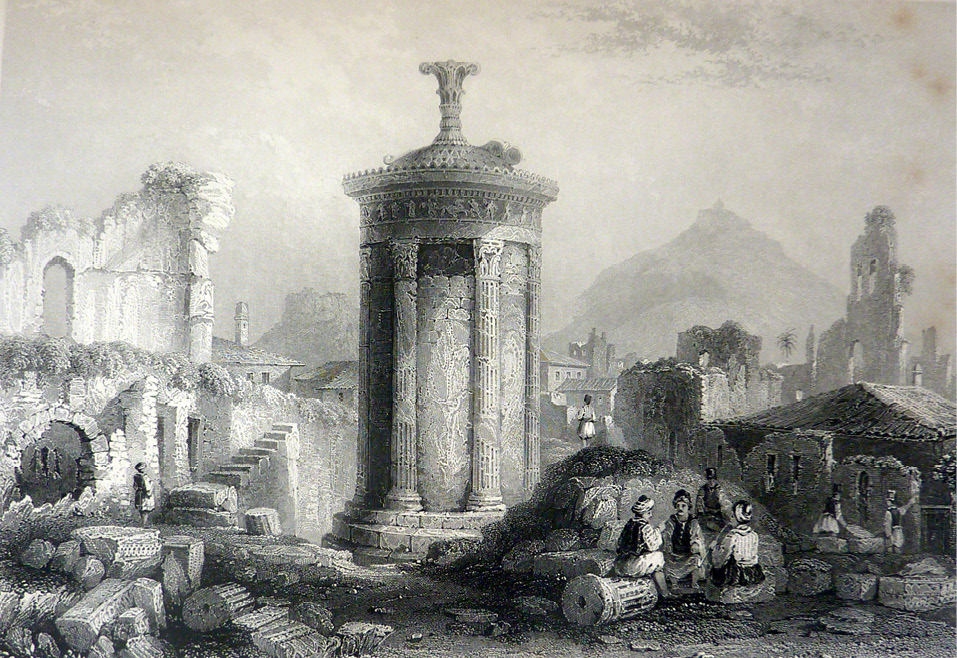
Figure 16.4. ‘The Lantern of Diogenes’. Engraving on steel.16
Another effect of the destruction of the town was to reveal a large ancient statue, still standing on its pedestal, almost complete apart from its head. The ‘Merman’ or ‘Triton’, as the statue was immediately named, which had been used as a corner post where four houses met, had been completely concealed.17 And this discovery seemed set to be only the first. The level of the unpaved modern streets that turned to mud when it rained, was sixteen or eighteen feet above the level of the well-paved streets of ancient Athens, with each layer replete with the debris of the intermediate centuries, and even more below.18
The ‘Merman’ is shown in Figure 16.5, another picture made on the spot by James Hore, but not yet worked up in the studio.
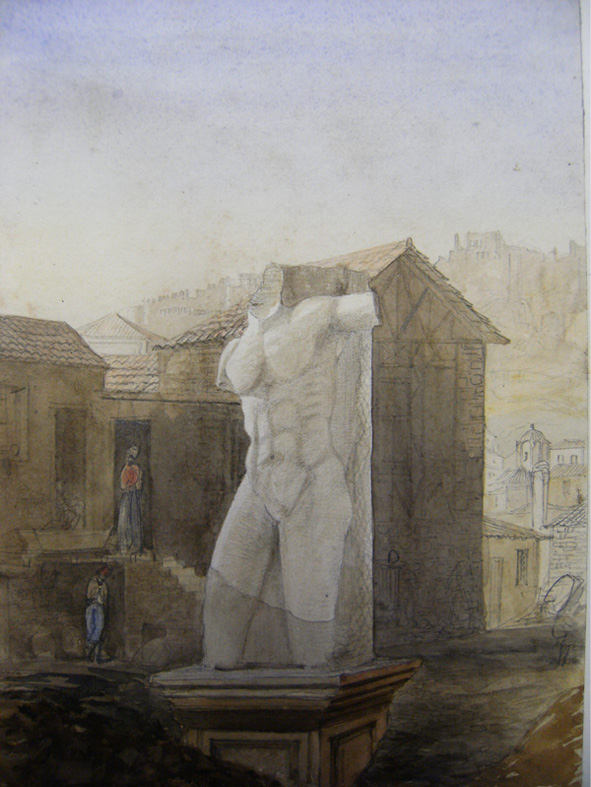
Figure 16.5. ‘The Merman’, uncovered among the ruins of post-Revolution Athens. Watercolour by James Hore, 1835.19
From reports from Athens, the French archaeologist Raoul-Rochette suggested that the image was one of Erichthonios, one of the eponymous heroes of ancient Athens. He made his identification principally from a remark by Pausanias who had thought that Erichthonios was half-man, half serpent.20 In a learned pamphlet he published a reconstruction of how the statue might have looked, drawn by Louis Dupré, shown as Figure 16.6.
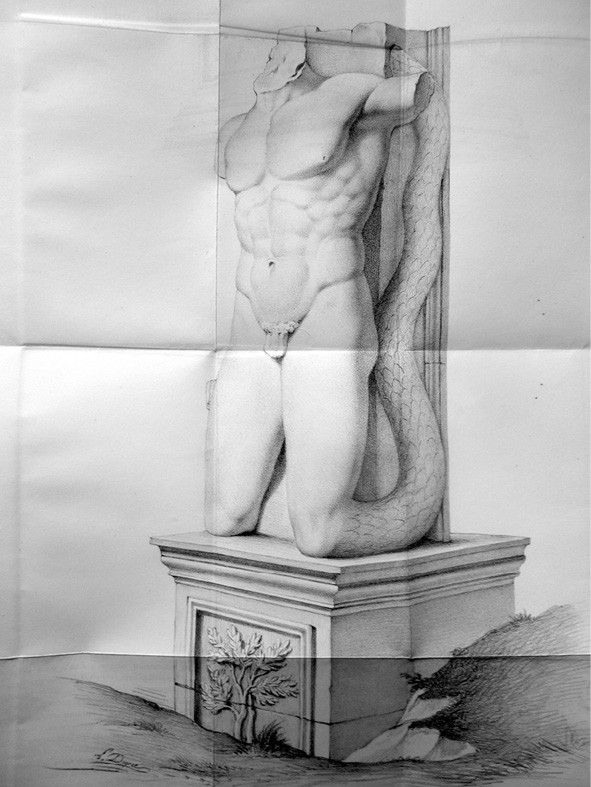
Figure 16.6. ‘Erichthonios’ Drawing by Louis Dupré. Large folding lithograph.21
Dupré, although he had spent time in Athens in 1819, had seen nothing of the Revolution, but was now becoming famous for the coloured lithographs in one of the most gorgeous books ever prepared, which presented the Revolution in heroic terms. It is likely that he had not himself seen the statue but made his image from descriptions.22 Dupré appears to have had access to presentations on vase painting, of which one is shown as Figure 16.7, an image that, as is normal, shows events as if they were occurring simultaneously. The half-man, half-serpent figure to the present viewer’s left, is now thought to represent Kekrops, the first king of Athens, and Erichthonios is usually shown as fully human, as here.
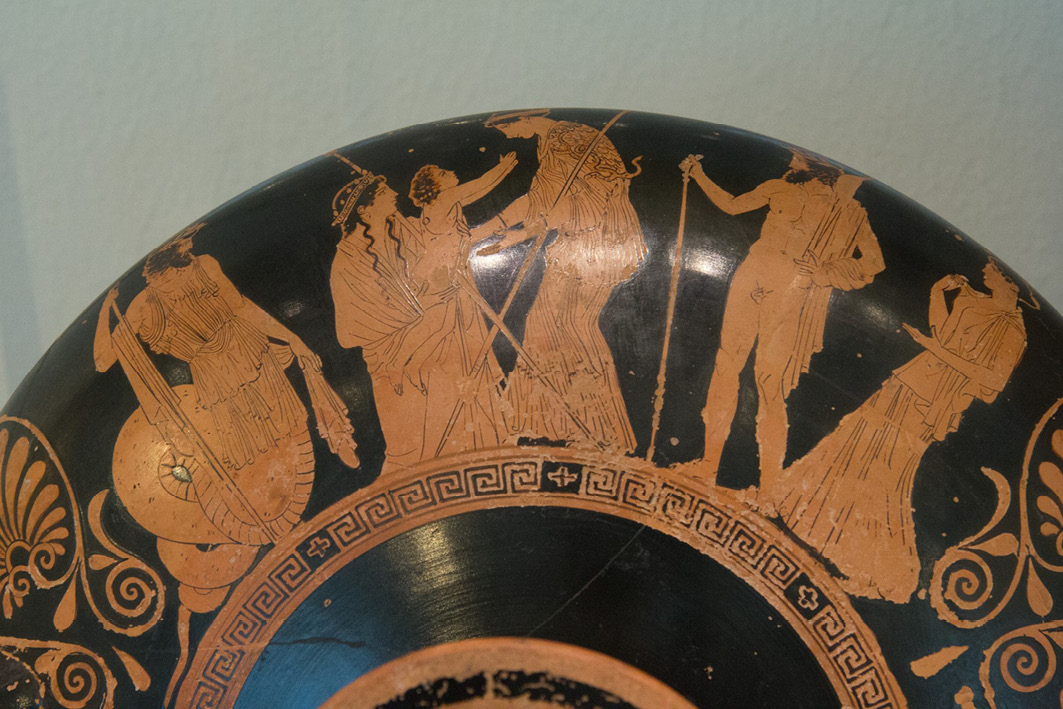
Figure 16.7. ‘The Birth of Erichthonios’, kylix from Tarquinia, 440–430 BCE.23
As the French scholar and museum manager Raoul-Rochette noted, although the newly discovered statue was probably made in post-classical times, it was a link in the mythic chain that connected the people of ancient Athens directly with the earth, supporting the self-fashioning of some families as ‘autochthonous’, and therefore unlike other Hellenes who had come to their cities as immigrants from elsewhere.24 What could be more appropriate at the moment of rebirth of the new nation than the unearthing of such a potent symbol? The modern philhellenic myth, that increasing emphasised a ‘blood’ and not only a language continuity, connected the modern with the ancient Greeks.
But there were difficulties. Kekrops, after which Meursius had named his book, Cecropia, was certainly the first king, and in the tragic drama of Athens, the Acropolis of Athens was often called the hill of Kekrops, but even in ancient times the characters of Erichthonios and his son Erechtheus tended to be run together. Isaac Newton, notably, at the beginning of the scientific revolution, who may have read Meursius, was among many who had struggled with the problem of how to reconcile the reports of what he called the ‘first memory of things in Europe’, as a step towards establishing calendar chronologies. In a posthumously published book, Newton used the stories to express his exasperation at their lack of fixity: ‘And so they have made two Pandions, and two Erechtheus’s, giving the name of Erechthonius to the first; Homer calls the first Erechtheus: and by such corruptions they have exceedingly perplexed Ancient History’.25 On closer examination, the unearthed statue, which at the time of writing still stands in the open air in Athens, was later shown to be a triton with fish scales, so losing much of its symbolic power.26
Those who expressed amazement at the survival of the ancient buildings in the town of Athens had not been allowed into the Acropolis. To those looking up towards the entrance during the years before the Ottoman army left in 1833, the Frankish tower and the Agrippa Monument were flecked as can be seen in a contemporary picture at Figure 16.8.
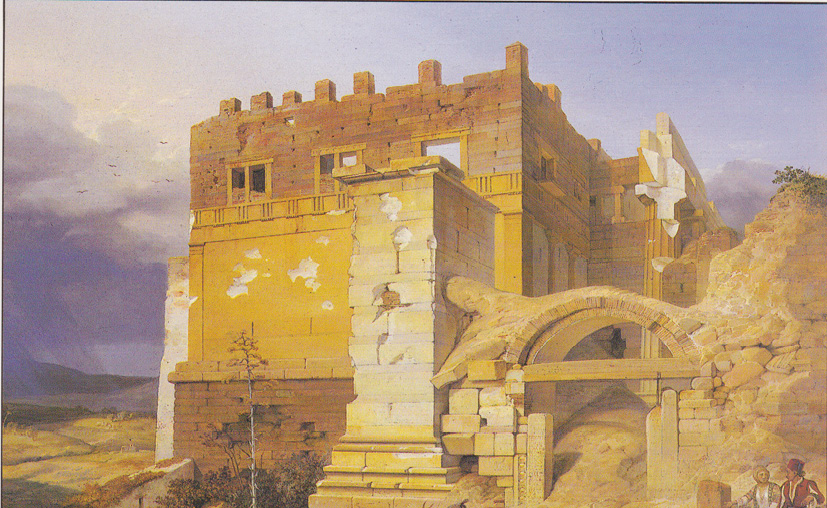
Figure 16.8. Entrance to the Acropolis, 1835. Painting by Karl Heideck. From a modern reproduction not further identified.
The lacerations marked where the marble had been struck in the bombardments, the crystals of the exposed white subsurface glistening in the sun, an effect that lasted for many decades.27
When late in 1830, non-Muslims were permitted by the Ottoman military authorities to enter the Acropolis for the first time for nine years, they were surprised at what they found. According to the twenty-five-year-old Benjamin Disraeli, who had arrived in Athens from having interviewed his hero Reschid in Ioannina in western Greece, in a letter to his father: ‘The ancient remains have been respected. The Parthenon and the other temples which are in the Acropolis, have necessarily suffered during the siege, but the injury is only in the detail — the general effect is not marred — we saw hundreds of shells and balls lying among the ruins’.28 Or as another visitor wrote: ‘stumbling now and then over one of the rusty bomb-shells or cannon-balls’.29 When the Ottoman army left in 1833, the pieces of broken bombs and shells lying on the surface were used to illuminate the whole Acropolis, every embrasure in the battlements sporting a makeshift metal lamp.30
And when others who had read reports of the fighting and the bombardments were allowed to examine the monuments on the summit, including the Parthenon, they too were astonished.31 The Parthenon was in much the same state as it had been after Elgin’s removals.32 One of the earliest images made after the reopening, a watercolour of the west end of the Parthenon made by Leo Klenze in September 1834, shows extensive damage to the houses on the summit but none to the monument.33 In 1858, twenty-two years after the end of the fighting, a visitor remarked on the ‘tawny gold of two thousand years staining its once spotless marble, sparkling with snow-white marks of shot and shell’.34 In 1846 the buildings were described as ‘gashed like forked lightning’.35 So slow had been the pace of change of the colour of the marble in the clean air of Athens that it was possible to distinguish the damage done during the bombardments of the Greek Revolution from the damage done in the previous siege in 1687.36
The artists of the nineteenth century, before the patina was eroded by recent air pollution, displayed the white flecking on the west end of the Parthenon as in the example at Figure 16.9, a painting by the American artist Frederick Edwin Church.
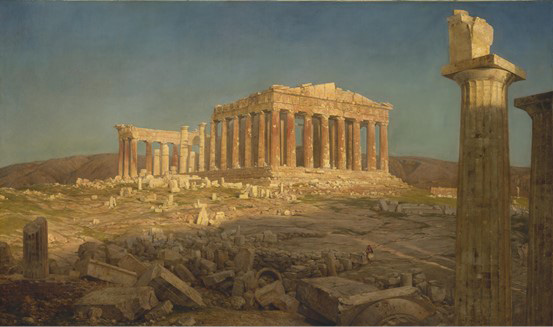
Figure 16.9. Frederic Edwin Church, The Parthenon from the West, 1871. Oil on canvas. Metropolitan Museum of Art, New York.37
Although paintings cannot be trusted in detail, nineteenth-century photographs, which even in monochrome emphasise the red in the spectrum, also confirm the remarks of visitors that the flecking was slight, with none on the other sides of the building.38 Jules Fleutelot, who visited in the summer of 1836, was unusual in regretting that, apart from its surface having been reddened by the climate, the marble was ‘almost immortal’.39
When in 1833 it became possible for the Greek authorities to examine the monuments on the summit, they met the same puzzle. The small town that had stood there before the war was gone, as were the gardens, orchards, and trees, casualties of two sieges when every scrap of vegetation and of wood had been used. But nothing had been touched and no attempt had been made to bury the bodies whose bones lay in profusion amongst the marble. It was as if the Ottoman army had scrupulously preserved the evidence, as on a modern crime scene, that would exonerate them in any later investigation into, or audit of, their stewardship of the monuments since 1826.
As for the buildings, the mosque within the Parthenon appears to have been entirely undamaged, as was the large house that had been the residence of the military governor. All the other houses were destroyed.40 And as for the classical buildings on the summit, the Nike temple, which had not yet been reassembled, was much as it had been before the war.41 As for the Propylaia, the Erechtheion and the Parthenon, it was generally assumed the Ottoman artillery bombardment had aimed to destroy them, not only because of their symbolic value for the neo-Hellenic nationalism of the Revolution but because they were the only substantial structures within which the Greek and philhellene soldiers had been able to shelter from the shelling.42 The Propylaia, having been enclosed in mediaeval fortifications was only flecked.
As for the Erechtheion, it was in ruins, with one of the Caryatids lying on the ground, and the roof fallen in.43 For a while it was assumed that the building had been destroyed by the Ottoman bombardment, a story that was frequently repeated later by those who relied on Gordon’s History of the Greek Revolution.44 But that book had been published in 1832, when the Acropolis was still occupied by the Ottoman army and Gordon had not at that time personally seen the building.45 And since it was known to the Ottoman forces that the gunpowder magazine had been located there until they lost control in 1822, it was an obvious target.
The influence of Lord Elgin had been so great among the Ottoman authorities that the entrance to the magazine in the Erechtheion had been specially opened to enable his agents to remove antiquities and then bricked up later.46 And the magazine was still there. In the spring of 1826 Georg Gropius, the Austrian consul, pleaded with the French consul Fauvel to press the Greek authorities to move it to somewhere less dangerous.47 Whether, as is unlikely, it was moved to a less exposed position, before Reschid’s army began its bombardment later that year I have not been able to discover. What seems to have happened was that when, in 1826, news arrived in Athens that Reschid’s army was on its way, an attempt was made by Gouras and the Greek defenders to make the building safer by piling clods of earth on the Byzantine-era brick arches inside. A few months later, the winter rains added to the weight and one night it collapsed; the widow and extended family of Gouras, at least eleven people, were crushed to death.48 It was still in its collapsed state when the Acropolis reverted to Greek control. The Ottoman army, it turned out, had not even removed the bodies.49 According to the Bavarian officer Neezer, one of the first to see inside, the skulls and bones of the dead still lay where they had died, and it was the Bavarians who began the task of gathering them and putting them into the cisterns near the Parthenon.50 Since the Erechtheion had not been struck or blown up, nor the marble shattered by bombardment, the fallen pieces lay ready to be put back in place, a process that began soon after independence.51
We have a picture of the Parthenon made soon after 1833, reproduced as Figure 16.10, which shows the mosque inside also undamaged.
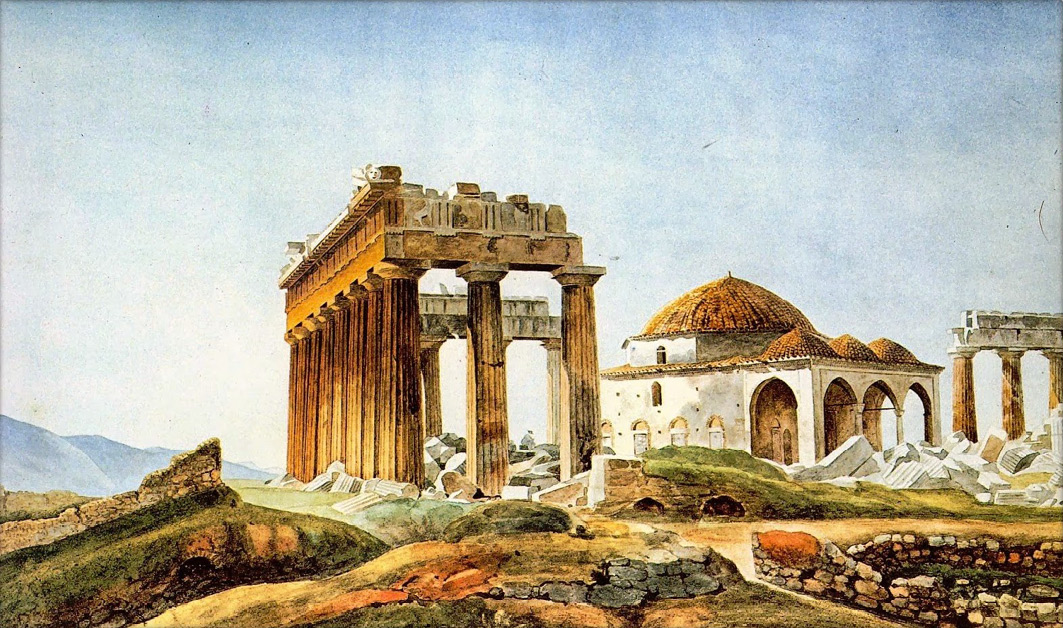
Figure 16.10. Painting by Captain Pierre Peytier, The Ottoman mosque built in the ruins of the Parthenon after 1715 (1830s). The scene was personally observed between 1833 and 1836.52
Jean-Pierre-Eugène-Félicien Peytier, an engineer captain in the French army who was employed in mapping Greece with modern trigonometric instruments, arrived in Athens in April 1833, and he left Greece in 1836. Consequently, he saw the Acropolis immediately after the Ottoman army left, perhaps participating in the ceremonies, and before the restoration work had started in earnest.53 A visitor in June 1834 confirms the accuracy of the picture, describing the Parthenon as ‘surrounded by deformity and heaps of rubbish; the interior filled by an ugly building, now a barrack, once a mosque’.54 And from the images we can see the whiter gaps from where Elgin’s agents had removed the metopes, around thirty years before.
We also have an oil painting by Johann Jakob Wolfensberger, the professional artist from Switzerland, who was in Athens in November 1832 and later. This picture too, reproduced as Figure 16.11, has to be dated to some time soon after the Ottoman army left in April 1833, and we can be confident that any drawing made on the spot was worked up in the studio.
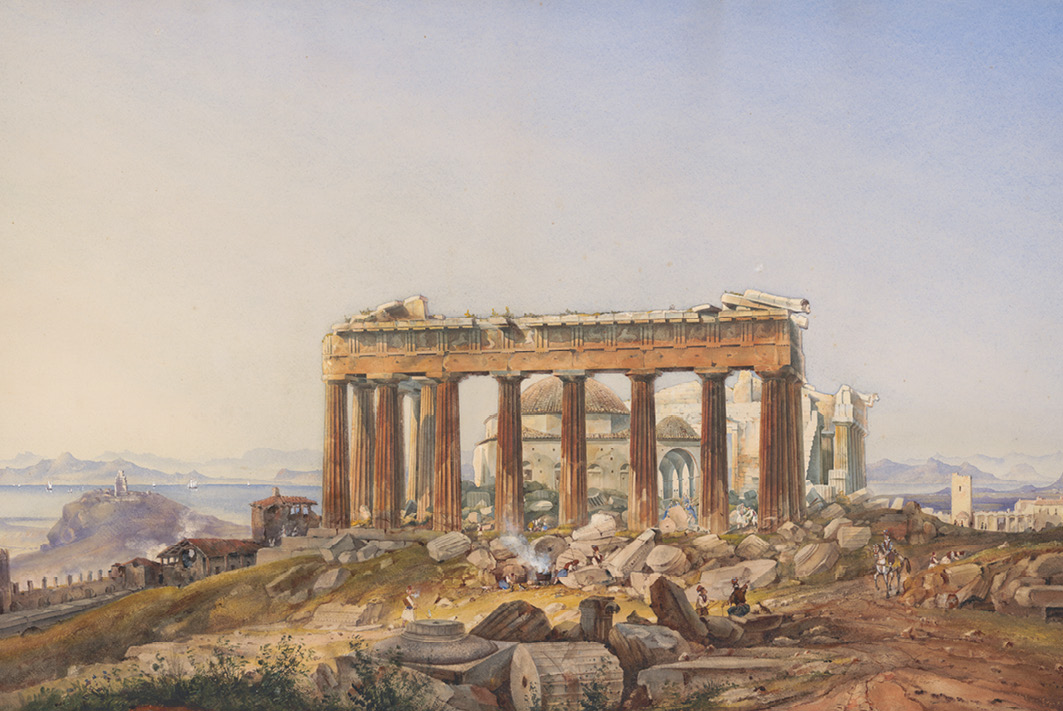
Figure 16.11. Johann Jakob Wolfensberger, The Acropolis looking west (c.1832–1835). Oil painting.55
This picture shows the Acropolis stripped and bare, with a few ruined houses, but the Parthenon and its mosque undamaged. It also shows the Hill of Philoppapos where the Ottoman guns that had killed so many people were sited, within easy range in both directions.56 Other paintings were made soon after the departure of the Ottoman forces, at a time when the clearances had only just begun. Although these are not necessarily to be taken as literal representations, they also show that if any damage was done to the Parthenon on some sides, it was almost imperceptible, without even a scar on the deep brown patinated surfaces.57
How could it have happened that all the monuments of Athens had survived?58 The word ‘miracle’ occurred to more than one puzzled visitor.59 Others, invoking the inscrutable designs of Providence, suggested that the ruins had been preserved as a perpetual reminder to Athens of what she had once been and might again be if reborn.60 To the astonished German historian, Georg Gervinus, the fact that the monuments had not been destroyed could only be explained by suggesting that the ‘divine art’ of the Acropolis had exercised some miraculous, mysterious, and magical spell over the barbarians who wanted to destroy them.61 The same question occurred to Charles Lévêque, a French archaeologist who first visited Greece in 1846 when the country was recovering from the Revolution. What mysterious power, he asked, had protected the Parthenon since 1453? It never seems to have occurred to him that the systematic mutilations to the frieze and the metopes had not been perpetrated by the Muslims but by the early Christians nearly a thousand years before that date.62 He too offered a providentialist explanation imbued with western romanticism. The Parthenon was ‘perfect’, Lévêque claimed, because it conformed with the designs of ‘the Creator’, something that the ancient Greek ‘artists’ had understood. It had only by a ‘miracle’ escaped Elgin. Since the time of Sulla, who had not destroyed Athens in 87–86 BCE, he suggested, the famous dead Greeks who were present in the works had watched over the living, and if bad days came again, they would protect them again.63
Edgar Quinet, who saw Athens at its lowest point, had been sent into Athens by the French expeditionary forces with the specific task of assessing the state of the monuments. He reported that all were standing and in good condition.64 How could they have escaped without the loss of a single stone, he asked himself. His answer: it was their destiny. It was as if the monuments had been saved because ‘the world still had need of them’.65
1 Richard Monckton Milnes in a letter from Athens, dated October 1832, quoted by Reid, T. Wemyss, The life, letters, and friendships of Richard Monckton Milnes, first Lord Houghton. (London: Cassell, 1890), i, 133. ‘Les monumens avaient peu souffert’, Cornille, Henri, Souvenirs d’Orient. Constantinople –Grèce –Jérusalem –Egypte. 1831–1832–1833 (Paris: Ledoux, 1833), 340.
2 Fuller, 542. ‘It is surprising how its monuments have escaped as they have out of the fury of the revolution’. Burgess, i, 291. ‘[T]he highly interesting remains of antiquity have, with scarcely an exception, been preserved uninjured’. Green, Philip James, Sketches of the war in Greece: in a series of extracts, from the private correspondence of Philip James Green, Esq., late British Consul for the Morea with notes by R.L. Green (London: Hurst, 1827), 113. ‘The least ruined objects here, are some of the Ruins themselves.’ Wordsworth Journal, 1st edition, 51. A description of Athens in 1829, noting the astonishing survival of the monuments among the ruins, and the welcome given by Bey Yousouf, with other details, in Blouet, Abel, and others, Expédition Scientifique de Morée, Ordonnée par le Gouvernement française (Paris: Firmin-Didot, 1831–1838), iii, 60–63. As another example, Athens was ‘un vaste sanctuaire fermé à tout ce qui n’est pas ancien’, Michaud and Poujoulat, i, 164.
3 Mure, ii, 45. According to the French architect Marchebeus, who visited with a large party in 1834, soon after the last Ottoman units left, the modern ruins revealed the richness, elegance, and majesty of the ancient. Marchebeus, Voyage, 102 with his mission described in Chapter 21.
4 Hamilton, William J., i, 36. Other comments include: ‘apparently quite perfect’; ‘the venerable Temple of Theseus but the rest of the town a mass of ruins’, Trant, 259; Of the Theseion, ‘not a column, and scarcely a stone has been displaced; the roof, the friezes, and the cornices still remain …[and] the first impression of the mind on beholding it, is doubt of its antiquity’, Macgregor, 72; ‘there is now scarcely any building at Athens in so perfect a state as the Temple of Theseus’, Wordsworth Journal 1st edition 51; ‘uninjured’, Green, 113; ‘still perfect’, Allan, 74; ‘Almost as perfect as when first erected’, Haight, Sarah, Letters from the old world by a Lady of New York (New York: Harper, 1840), ii, 296; ‘[A]s perfect as if it had survived only twenty years instead of two thousand’, Frankland, Charles Colville, Captain, Travels to and from Constantinople in 1827 and 1828, or, Personal narrative of a journey from Vienna … to Constantinople (London: Colburn and Bentley, 1830), i, 303; ‘[W]onderfully preserved’, Canning in Lane-Poole, Canning, i, 501; ‘conservé presqu’intact’, Spitaels, 164; ‘[W]ondrously survived’, Tischendorf, 283.
5 ‘The fanaticism of the Turks has induced them to deface the saints and virgins, which decorate in gaudy fresco colouring the walls round the altar; while most unaccountably the bassi relievi of the friezes have escaped from their iconoclastic fury.’ Frankland, i, 303. ‘Part of the roof has been destroyed, and the pictures which once covered the interior walls, have been obliterated, though a considerable part of the stucco upon which they were painted yet remains. The walls, columns, and main body of the edifice, are uninjured’. Morris, E. Joy, Notes of a Tour through Turkey, Greece, Egypt, Arabia Petraea to the Holy Land (Philadelphia: Carey and Hart, 1842), i, 92. For the stabling of horses, see Trant, 268, who noted that he was able to make out the tombstone of Admiral Watson under the dung. The Christian religious paintings had already been mutilated, the graves broken into, and the bones scattered in 1822, when the Ottoman armies had been temporarily in control of Athens, in a classic case of monument cleansing. Noted by Raybaud, ii, 82–83.
6 Macgregor, 72.
7 ‘The fanaticism of the Turks has induced them to deface the saints and virgins, which decorate in gaudy fresco colouring the walls round the altar; while most unaccountably the bassi relievi of the friezes have escaped from their iconoclastic fury’. Frankland, i, 303. ‘Part of the roof has been destroyed, and the pictures which once covered the interior walls, have been obliterated, though a considerable part of the stucco upon which they were painted yet remains. The walls, columns, and main body of the edifice, are uninjured’. Morris, E. Joy, Notes of a Tour through Turkey, Greece, Egypt, Arabia Petraea to the Holy Land (Philadelphia: Carey and Hart, 1842), i, 92. The stabling of horses was noted by Trant, 268, who reported that he was able to make out the tombstone of Admiral Watson under the dung. For Elgin’s removals from the building, see Chapter 20. The pieces from the ancient roof (‘soffits’) are listed as among the many antiquities shipped in HMS Braakel, as noted by Smith, Lord Elgin, 254.
8 The French nobleman d’Estourmel, who had met him when both were on their way to Greece and who wanted him to join his party as part of a proposed tour of the Levant, had to leave him in Athens, as noted in d’Estourmel, i, 7, 133, and elsewhere. Whether by his own mistake or that of a printer, d’Estourmel calls him ‘Wolfenberger’. Lacour, 163 and 172, records meeting Wolfensberger in Athens in November 1832. Not long afterwards Wolfensberger took his picturesque landscape painting skills to Constantinople and its vicinity, where he shared accommodation with the British portrait painter Francis Hervé who had also gone there in search of work. Noted as ‘Wolfenburger’ by Hervé, Residence, ii, 129.
9 Wright, Rev. G.N., The Rhine, Italy, and Greece. In a series of drawings from nature by Colonel Cockburn, Major Irton, Messrs. Bartlett, Leitch and Wolfensberger. With historical and legendary descriptions by the Rev. G.N. Wright (London: Fisher and Son, [n.d.] [1840]), ii, 79. In order to maximise the size on the printed page, I have trimmed the captions that appear in English, French and German, a phenomenon discussed in Chapter 7. A watercolour by Wolfensberger showing a party of soldiers making their way through the ruins of the town of Athens, with the undamaged Theseion and the emerging ‘merman’, was shown in an exhibition prepared by Rachel Misdrachi-Kapon and Angeliki Kokkou held between 25 September and 15 November 1985 by the Goulandis-Horn Foundation. Catalogue entitled Αθηνα απο τελος του αρχαιου κοσμου ως την ιδρυση του ελληνικου κρατους Athens from the End of the Ancient World till the Establishment of the Hellenic State (Athens: Ministry of Culture, 1985), number 257. The picture was then in the collection of the archaeologist Homer A. Thompson.
10 Other images of the ancient monuments in the immediate post-Revolution years in Athens that add further confirmation to the visual evidence of those I have reproduced are to be found in, for example, Stoneman, Richard, ed., A Luminous Land, Artists Discover Greece (Los Angeles: Getty, 1998), notably 46, ‘Greeks Fetching Water from the well at the Tower of the Winds in Athens, 1836’ by Martinus Rørby, and Tsigakou, Fani-Maria and Dollinger, Anja Sibylle, Glanz der Ruinen Die Wiederentkung Griechenlands in Gemälden des 19. Jarrhunderts Aus den Beständen des Benaki Museums, Athen und des Rheinishen Landesmuseums Bonn (Cologne: Rheinland-Verlag GmbH, 1995) notably ‘Das Lysicrates-Denkmal 1838/39’ by Jean Nicholas Henri des Chacation, number 23, plus many images including sketches reproduced in Bendtsen, Margit, Sketches and Measurings, Danish Architects in Greece 1818–1862 (Copenhagen: Royal Academy of Fine Arts et al., 1993), especially Figure 22, Christian Hansen, ‘The Parthenon in 1836’, Figure 57, Christian Hansen, ‘The Thrassylos monument in 1834’. Some less skilled pictures from 1838, by which time restoration and excavation were under way, are reproduced in colour in Skene, James, Monuments and Views of Greece, 1838–1845, Foreword Stephen Cozi Agetastos, Introduction Fani-Maria Tsigakou, text in Greek and English (Athens: Historical and Ethnological Society of Greece, 1998).
11 Private collection. Subject to copyright restrictions.
12 For example Quinet, 365.
14 ‘S. Pomardi del., Cha.s Heath Sculp., London, Published June 1, 1819, by Rodwell & Martin, New Bond Street’ in Dodwell, Edward, A Classical and Topographical Tour through Greece, during the Years 1801, 1805, and 1806 (London, 1819), i, opposite 269.
15 ‘the convent … has been left in a very ruinous state by the vicissitudes of the late wars, but that delicate monument has happily escaped uninjured’. Garston, Greece Revisited, i, 150.
16 ‘Drawn by Wolfensberger, engraved by W. Floyd. Fisher, Son, & Co. London & Paris.’ Wright, Rev. G.N., The Rhine, Italy, and Greece. In a series of drawings from nature by Colonel Cockburn, Major Irton, Messrs. Bartlett, Leitch and Wolfensberger. With historical and legendary descriptions by the Rev. G. N. Wright (London: Fisher and Son, [n.d.], [1840]), i, 40.
17 This detail, which helps to explain how and why it had survived, is recorded by Wines, 302. The emergence of the statue is also noted by Trant, 272, with a woodcut illustration, and by Quinet, 360; Röser, 100; Hamilton, William J., 37; and others later.
18 Measured by the geologist Hamilton, William J., i, 36
19 Private collection. Subject to copyright restriction.
20 Paus 1.24.7. Discussed by Loraux, Nicole, The Children of Athena, Athenian Ideas about Citizenship and the Division between the Sexes, translated by Caroline Levine (Princeton: Princeton University Press, 1993), 223. The original French edition was published in 1984.
21 Inserted in Raoul-Rochette, M., Lettre à M.L. de Klenze, sur une statue de héros attique récemment découverte à Athènes (Paris: Bourgogne et Martinet, 1837).
22 Dupré, Louis, Voyage à Athènes et à Constantinople, ou Collection de portraits, de vues et de costumes grecs et ottomans, peints sur les lieux (Paris: Dondey-Dupré, 1825 but almost certainly some years later, perhaps as late as 1839. A heavily adapted edition in Greek with much additional information, and pictures of Greece by other artists, edited by Manoles Vlachos (Athens: Folio, 1994). Dupré died in 1837.
23 Wikimedia Commons, https://commons.wikimedia.org/wiki/File:Birth_of_Erichthonios,_kylix_from_Tarquinia,_440-430_BC,_Berlin_2537,_141637.jpg. My suggestion that the naming ceremony of a recently born infant is shown on the frieze of the Parthenon is discussed in The Classical Parthenon.
24 The ‘autochthone par excellence.’ Raoul-Rochette, 6. The autochthony claim, and its relevance to the decisions on the design of the classical-era Periclean Parthenon, and of local opposition to that design is discussed in The Classical Parthenon.
25 Newton, Isaac, The Chronology of Ancient Kingdoms Amended (London: Tonson, Osborn, and Longman, 1728), 5.
26 Thompson, Homer A., ‘The Odeion in the Athenian Agora’ in Hesperia: The Journal of the American School of Classical Studies at Athens, vol. 19, no. 2, American Excavations in the Athenian Agora: Thirty-Ninth Report, April–June 1950, 31–141. The episode however makes a neat prelude to a series of questions that still overhang much discussion of the Parthenon, namely what are the myths that are displayed in its complex sculptural components, and how were they seen and used in ancient times, as will be addressed in The Classical Parthenon.
27 Garston’s comment on the monuments at the entrance that ‘it is a matter of surprise that they have not fallen’ seems exaggerated. Garston, Greece Revisited, i, 121.
28 Disraeli, The Letters of Benjamin Disraeli, edited by John Matthews [and others] (Toronto: University of Toronto Press, 1982–2014), no 104, page i, 174, dated 30 November 1830. In a novelized version, Contarini Fleming, published soon after his return to England and destined to be kept in print for mainstream reading for the rest of the century, which included extracts verbatim from his letters, he altered ‘balls’ to ‘cannon-balls’. Disraeli’s account of his visit to Reschid, which was also based on letters but was drastically altered in Contarini Fleming is described in Chapter 18.
29 Murray, E. Clare Grenville, From Mayfair to Marathon (London: Bentley, 1853), 420. Murray’s sustained attack on Stratford Canning is reported in Chapter 19.
30 Noted by the military officer, Sir Grenville Temple, who was present. Temple, Sir Grenville, Bart., Travels in Greece and Turkey; being the second part of excursions in the Mediterranean (London: Saunders and Ottley, 1836), i, 81. The metal fragments were presumably used as cups that held olive oil and wicks.
31 For example: ‘plusieurs des monuments d’Athènes étaient restés dans un état extraordinaire de conservation, notamment le Parthénon.’ D’Estourmel, i, 96. In October 1839, when much new building was under way, the British colonel Edward Napier, on a brief visit, noted that: ‘[The Parthenon and the other ancient buildings] strike the stranger mute with astonishment, and make him wonder how such monuments of splendour and magnificence could have … so long withstood the ravages of time and the elements, or the more desolating effects of fanaticism and war’. Napier, Lt. Colonel E., Excursions along the Shores of the Mediterranean (London: Colburn, 1842), ii, 370. .
32 [The Parthenon] ‘is not, however, in such a state of ruin as we had been led to imagine’. Morris, i, 83.
33 Stillwell, Richard, ‘The Parthenon in 1834’, in Record of the Art Museum, Princeton University, vol. 19, no. 1, Special Number in Honor of the Director Ernest Theodore DeWald on the Occasion of His Retirement, 1960, 93–97.
34 Taylor 40. ‘Blackened columns ‘with spots of dazzling whiteness’. Lamartine, i, 25.
35 Gadsby 70. Noted also in 1844 by Reynaud, 21.
36 Comment by Penrose quoted by Jenkins and Middleton from Proceedings of the RIBA 1st series 1851–1852, AH (3) 8–9 and in St Clair, Lord Elgin and the Marbles, 284.
37 Wikimedia Commons, https://commons.wikimedia.org/wiki/File:Parthenon_(1871)_Frederic_Edwin_Church.jpg
38 ‘slightly injured’, Grosvenor, ii, 146.
39 Fleutelot, Jules, Retour d’un voyage en Orient par Malte, la Sicile et l’Italie: juillet–octobre 1836 (Paris: Duberger, 1837), 22.
40 ‘enormous heaps of rubbish, the remains of generations of frail dwellings’. Hill, S.S., 92. His visit was not later than 1842.
41 The Nike temple had mostly had been dismantled to provide materials for the refortification in the early eighteenth century. A visitor in June 1831 noted: ‘Two elegant fluted Doric columns and one pilaster in the same style, supporting the two lower members of the entablature, with insignificant portions of the walls of the cella, are all that is left of that once beautiful edifice’. Wines, ii, 215.
42 For example: ‘It is surprising to see how the column forming the south west angle resisted their repeated efforts to destroy it. The intention of the Turks was to bring down the remainder of the temple upon the Greeks, who were then in possession of the fortress, and had taken refuge in the interior of the ruin.’ Cole, unnumbered page describing the view, ‘West Front of the Parthenon’.
43 ‘The Erechthaeum has not suffered much lately, though one of the Cariatides is lying on the ground’. Temple, i, 81: he visited in April 1833 immediately after the Ottoman army left. It was also the considered opinion of Pittakis that the building had ‘fallen down’. Hobhouse, 1858 edition, ii, 448 from personal communication. A line drawing of the Erecththeion, made in 1843 at the time of the initial clearances, showing the brick vault and a block that had fallen on to it, is reproduced in Dalgabio, Jean-Michel, Lyon, Athènes, Constantinople: les dessins du voyage de 1843 (Lyon: University of Saint-Étienne, 2002), 68.
44 The false story entered the scholarly tradition, repeated, for example, in Curtius, Ernst, Die Akropolis von Athen: Ein Vortrag im Wissenschaftlichen Verein zu Berlin am 10 Februar gehalten (Berlin: Besser, 1844), 31.
45 Gordon, ii, 376. D’Estourmel, who did not visit the Acropolis, heard the story that the Erechtheion had been targeted in the bombardment and that children were killed, d’Estourmel, 116. The story that the damage was due to the bombardment was repeated by Cusani, ii, 262; von Arnim ii, 32, ‘gänzlich zerstört’, and Damer, i, 42. Makriyannis, writing later, gives the names of the male family members, describes the heaping over with earth, and also says the temple was destroyed by bombardment, with only one boy not killed. Memoirs ed. H.A. Lidderdale, 102–03. Paton in Stevens et al, Erechtheum, 305–09, notes the evidence then available for the state of the Erechtheion and the comments on whether it had collapsed or been struck by gunfire, including the opinion of Sir Richard Church in his unpublished memoir in the British Library that it had collapsed. That the Erechtheion had collapsed from the weight of earth was the opinion of Auldjo, 24, and of the well-informed Gropius, who had lived in Athens since long before the Revolution as related to Trant, 271. Collapse was the explanation of Henri Cornille, who visited the Acropolis in the winter of 1832/33 when it was still occupied by the Ottoman army and before Gordon’s History was locally available. Cornille, 313. He notes that Fabvier had established a battery nearby.
46 Elgin, Memorandum, 1815 edition 25.
47 Gropius to Fauvel, March 13, 1826: ‘Le vestibule du temple de Minerve Polias sera sauvé du danger de sauter un jour dans l’air; on va construire sans délai une autre poudrière en chateau’. Noted by Lesk, 592 from Bibliothèque national de France, MSS, Fonds fr. 22874, fols. 220 and 221.
48 ‘Gouras had prepared for himself a famous temple, which he had heaped over with earth to stop bombs breaking in… He brought [his family and friends] into the citadel, put them in the cellar where they ate and drank without one of them ever setting foot outside the cellar door. For outside there were bombs and grenades and cannon-shell, and every man went in danger, but in the cellar there was a snug safety’. Makriyannis, 102. A line drawing, made in 1843 at the time of the initial clearances, showing the brick vault and the fallen blocks, in Dalgabio 68. Many more are reproduced by Lesk
49 Paton in Stevens et al., 558, quoting Ross and Thiersch.
50 Neezer, quoted by Norre, 202.
51 ‘it seems to have been borne down by the weight suddenly added to that of the other objects laid upon the roof for its protection, rather than to have been dissevered by the explosion of the shell, it is probable that its restoration will be fully as effective as that of the Temple of Victory’. Garston, i, 126. Noted also by Milnes, 127. A photograph of a bruise on the marble surface caused by a projectile is shown by Lesk, Figure 199, p. 1082. Whether it was caused by flying splinters or by musket fire cannot be ascertained. It tends to confirm that the damage to the Erechtheion caused by the bombardments during the Revolution, like that to the other ancient buildings, was superficial.
52 Wikimedia Commons, https://commons.wikimedia.org/wiki/File:Peytier_-_Mosque_in_the_Parthenon.jpg
53 Much information about Peytier and his career, with numerous illustrations, although not this one, in Peytier Album.
54 Burgess, i, 287.
55 Wikimedia Commons, https://commons.wikimedia.org/wiki/File:Zentralbibliothek_Z%C3%BCrich_-_Die_Akropolis_in_Athen_-_500000156.jpg
56 A watercolour by Wolfensberger, dated 1834, a picturesque view of the Parthenon from the northwest, with what may be intended as Greek revolutionary soldiers and a local woman, and showing the same pattern on the building of occasional white chips on the brown patina, now in the Pushkin Museum, Moscow, is reproduced in colour in Valavanis, Panos, The Acropolis Through its Museum; Translation Alexandra Doumas (Athens: Kapon, 2013), 97, from the original now in the Pushkin Museum, Moscow.
57 For example, those made in 1834, by Martinus Røyerbe and Ludwig Lange reproduced in colour in Papageorgiou-Venetas, Alexander, ed., Briefwechsel Klenze-Ross 1834–1854 (Athens, Archäologische Gesellschaft zu Athen, 2006), 243.
58 As for the hill of the Muses, the Ottoman artillery position was bombarded by the Greek forces besieged in the Acropolis but the Monument of Philopappos itself was not damaged. ‘the Monument of Philopappus on the hill of Museum — here the ground is thickly strewed with fragments of shells, and round shot, a battery having been established on this spot to bombard the Acropolis, and it is really surprising that the monument escaped the citadel’s fire so well.’ Temple 77.
59 For example Cole, William, Select Views of the Remains of Ancient Monuments in Greece, as at Present Existing, from drawings taken and coloured on the spot in the Year 1833 (London: for the Author, Ackermann, 1835), Preface, ‘miraculously preserved’; [Of the Monument of Lysicrates] ‘Its preservation seemed miraculous’ Alcock, 178.
60 ‘Its preservation is owing to that respect and awe which works of art inspire in the rudest and most savage breasts.’ Morris, i, 86. ‘It is the partial regeneration and commencing civilization of this oppressed and unfortunate people, who, during that long epoch, with the proudest monuments of human genius constantly before their eyes, to remind them of their degradation, have, from the inscrutable designs of Providence, been visited, as it were, with a moral and political death, and left to wander through a long and gloomy night of deplorable barbarism. Since the day that St. Paul preached on the Areopagus at Athens, it has been for that people one continued and unbroken endurance of the tyrant’s despotic chains, until the light of Christianity again burst over the pagan temples in Greece, and now gives promise that she shall be redeemed, and disenthralled, and restored to her pristine rank.’ Mott 179.
61 ‘Dans toutes les dévastations terribles que la Grèce a subies, l’acropole d’Athènes avait été protégée par un sort miraculeux et mystérieux, ou pour mieux dire, par le charme magique d’un art divin qui frappa d’admiration les barbares mêmes et qui les empêchait de la détruire entièrement.’ Gervinus, G.-G., Insurrection et régénération de la Grèce, Traduction française par J.-F. Minssen [et] Léonidas Sgouta (Paris: Durand, 1863) 116.
62 Lévêque Charles, ‘Les monumens d’Athènes et les études archéologiques en Grèce’ (Paris: Revue des Deux Mondes T.11, 1851), 638.
63 Ibid., 660. The decision by Sulla is discussed as an example of ancient rhetoric in The Classical Parthenon, https://doi.org/10.11647/OBP.0279.
64 In his report he included the Parthenon and other monuments on the Acropolis that he was not able to enter, relying on distant views and conversations with local Ottoman officials and others. His mission is described with transcripts of archival documents by Bondois, P. M., ‘La Mission d’Edgar Quinet en Morée’, Revue d’Histoire Littéraire De La France, vol. 43, no. 3, 1936, 418–19. A summary of his report was published in Paris in the Moniteur Universel of 12 August 1829. It is just possible that Quinet had been sent to check on whether the agreement with Reschid to be discussed in Chapter 14 was being observed, but if so, he seems not to have been told about it.
65 ‘Je me sentais pénétré pour ces restes de ce respect qu’inspire une destinée qui vient d’échapper à de grands dangers. Une haute fortune en avait pris soin et venait de les sauver, comme s’ils étaient encore nécessaires au monde’. Quinet, 335 The passage is also in the 1830 edition.
